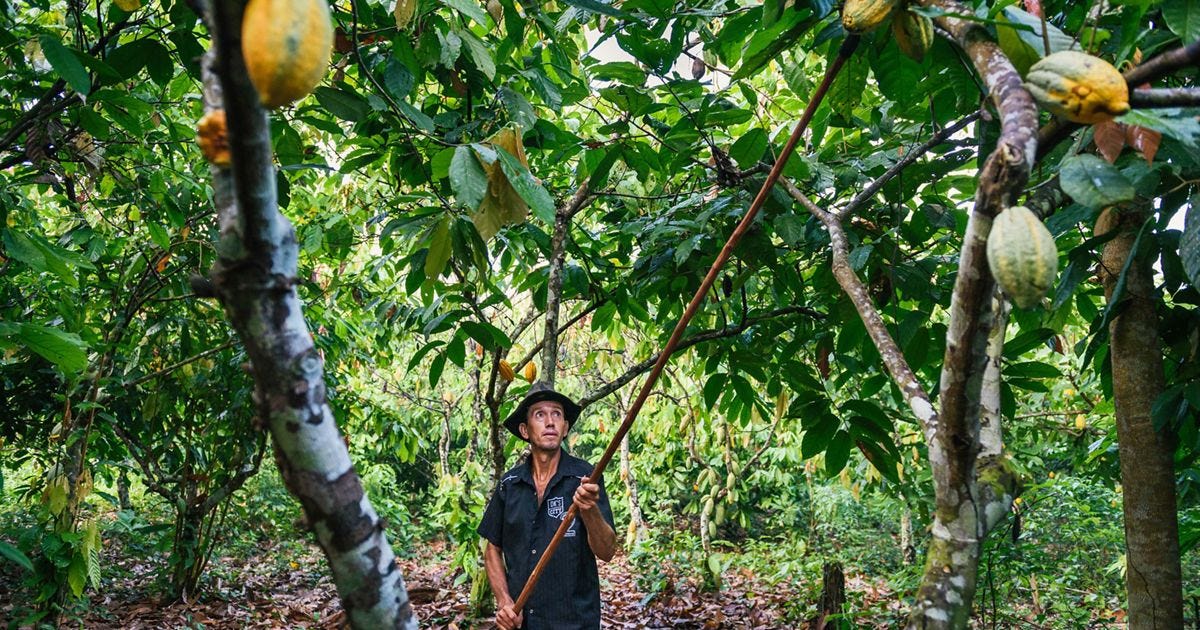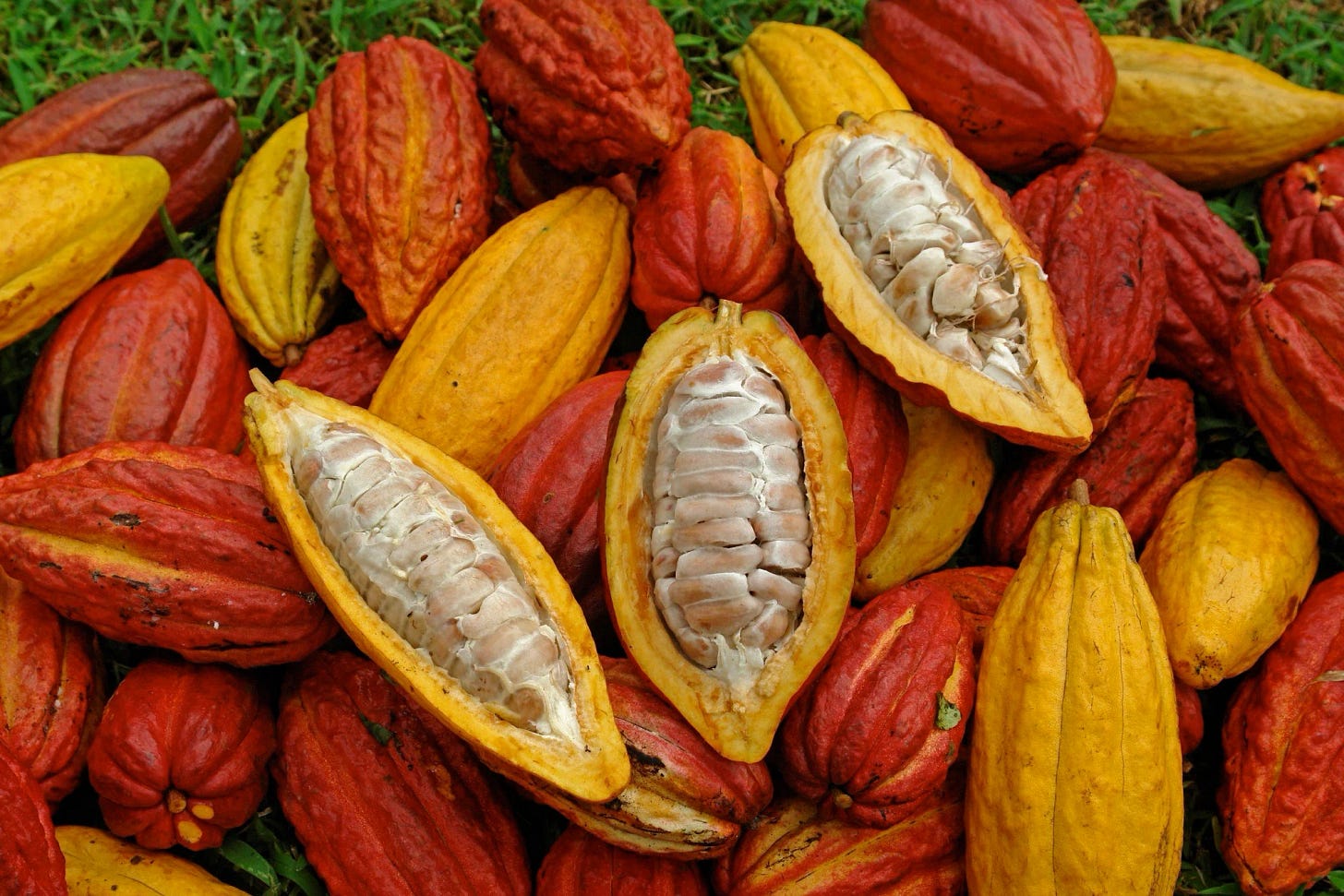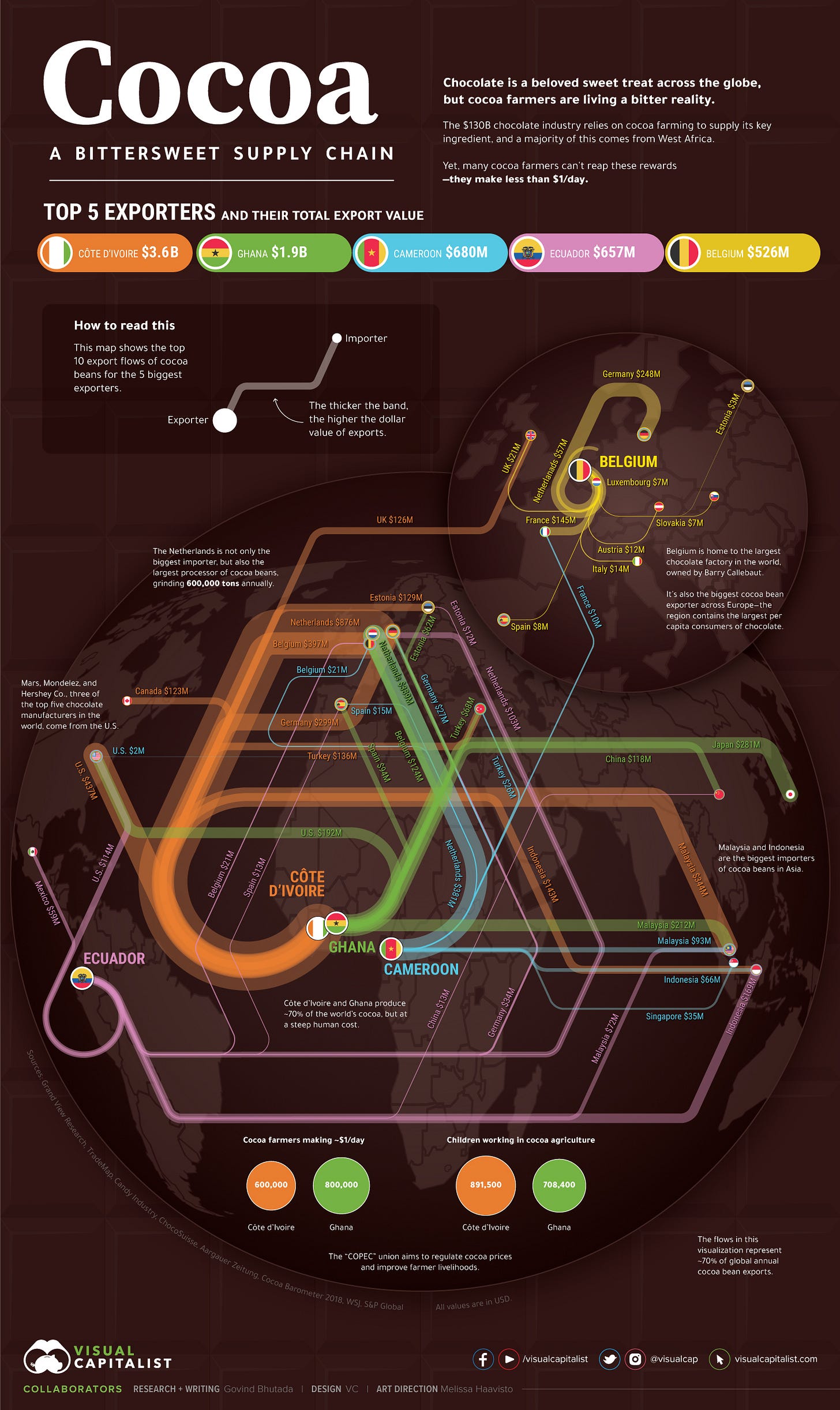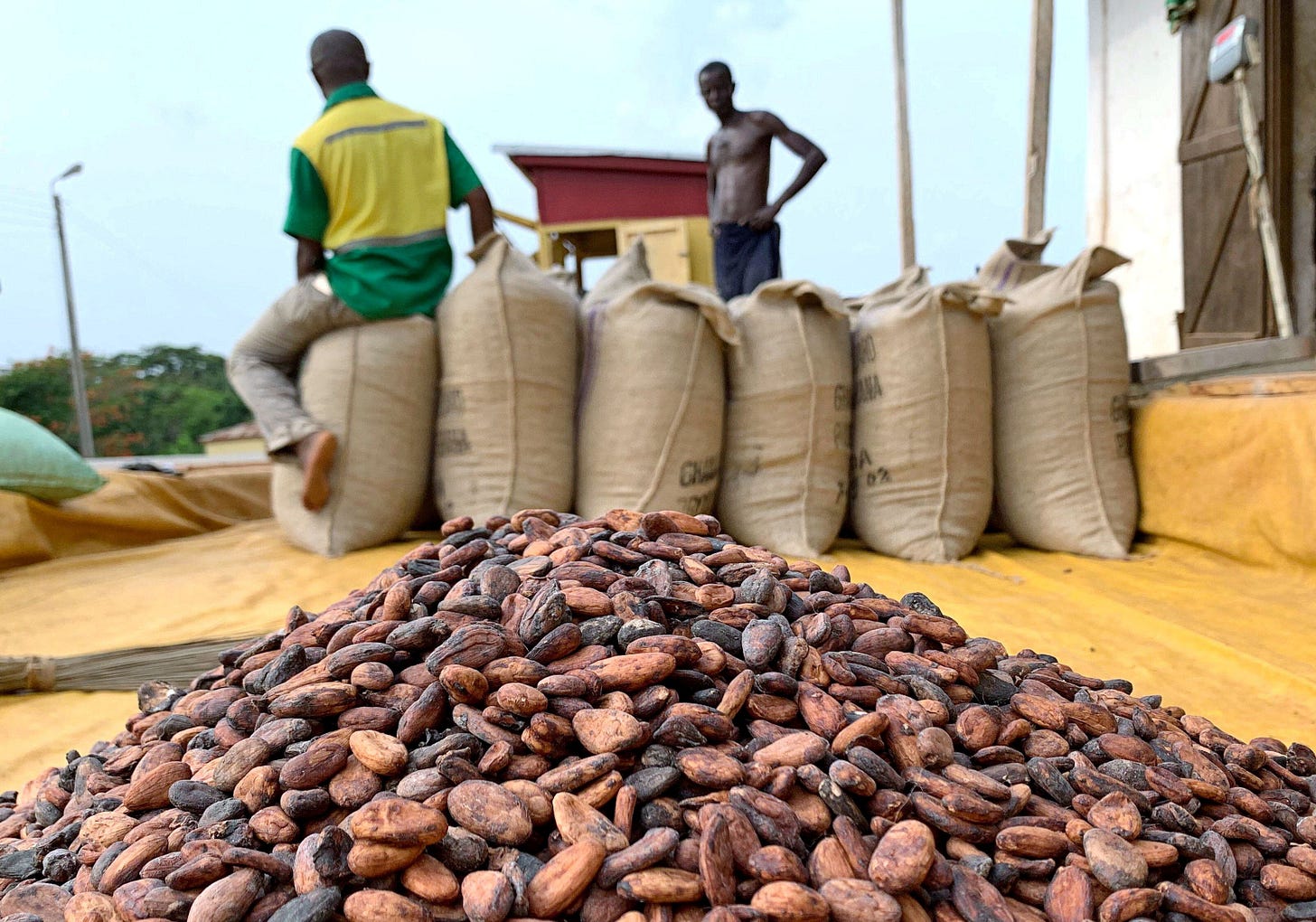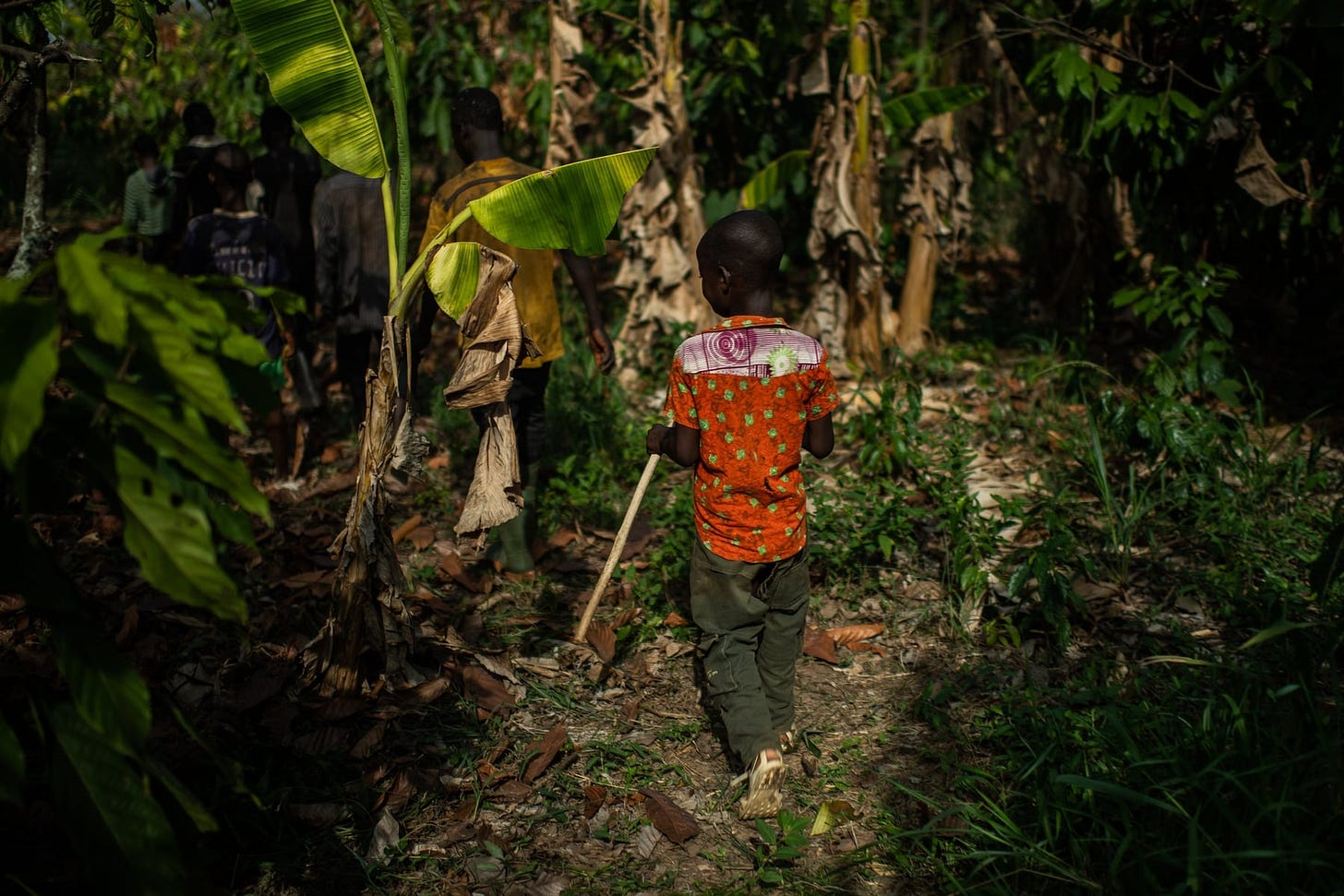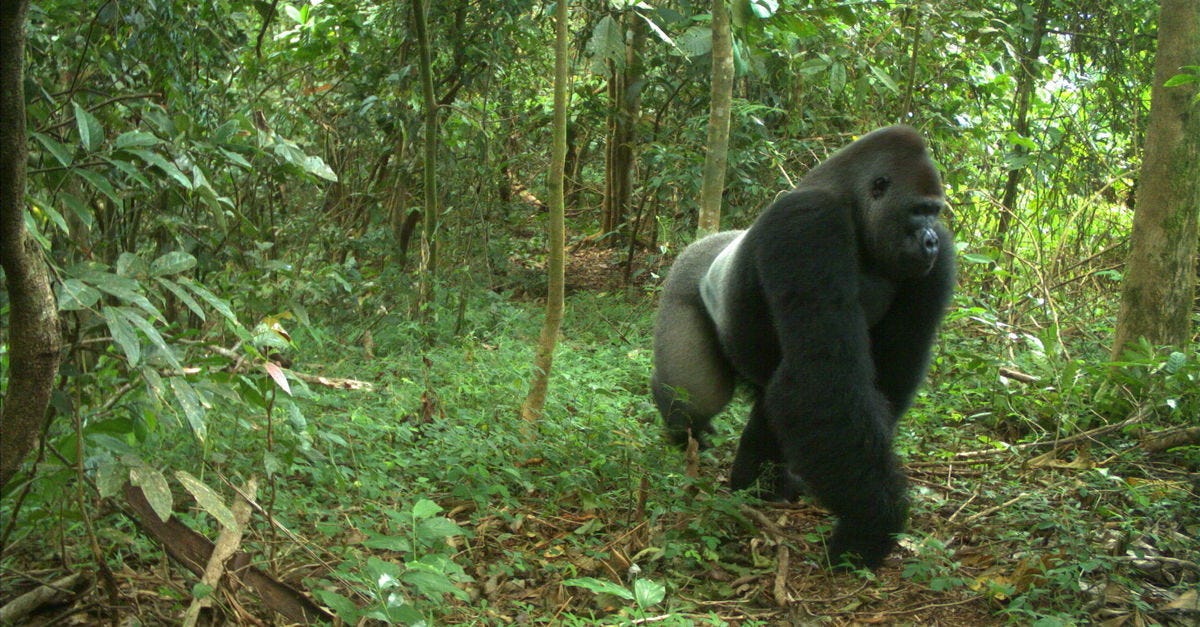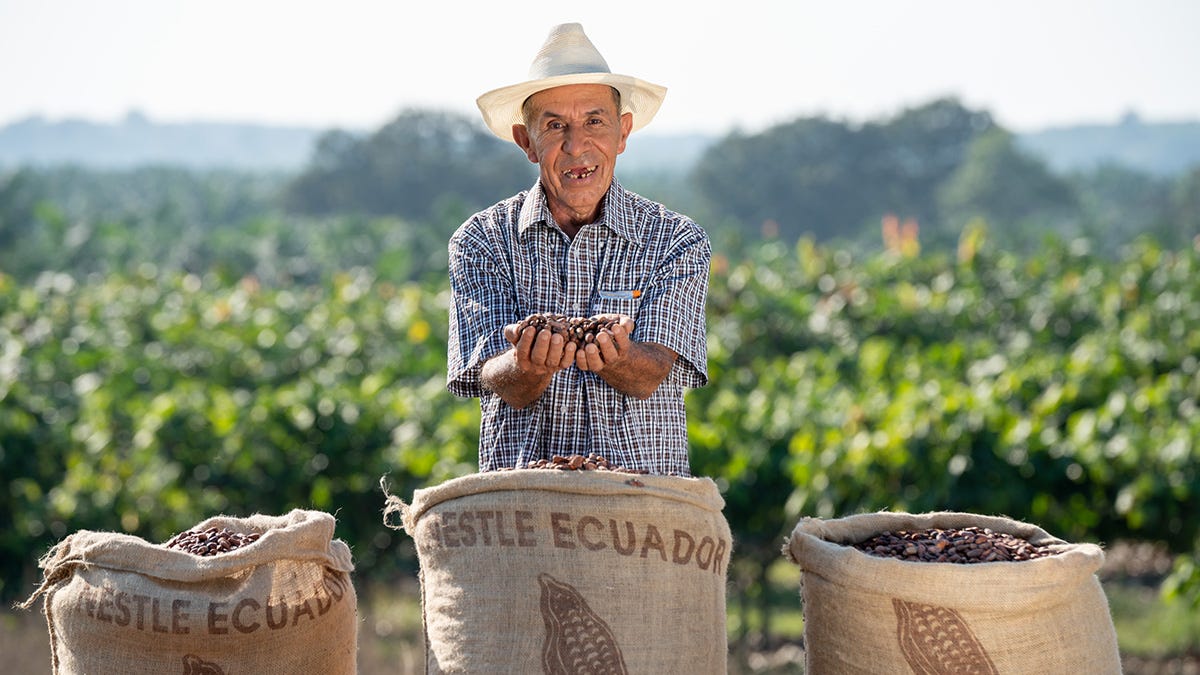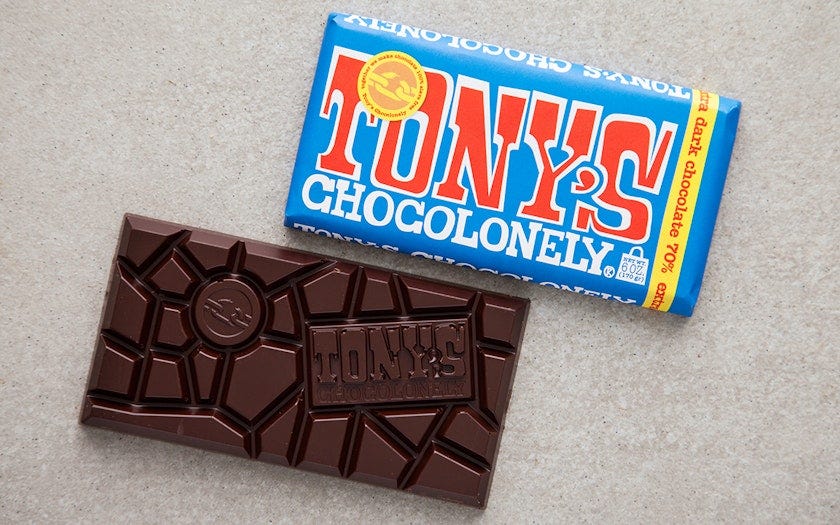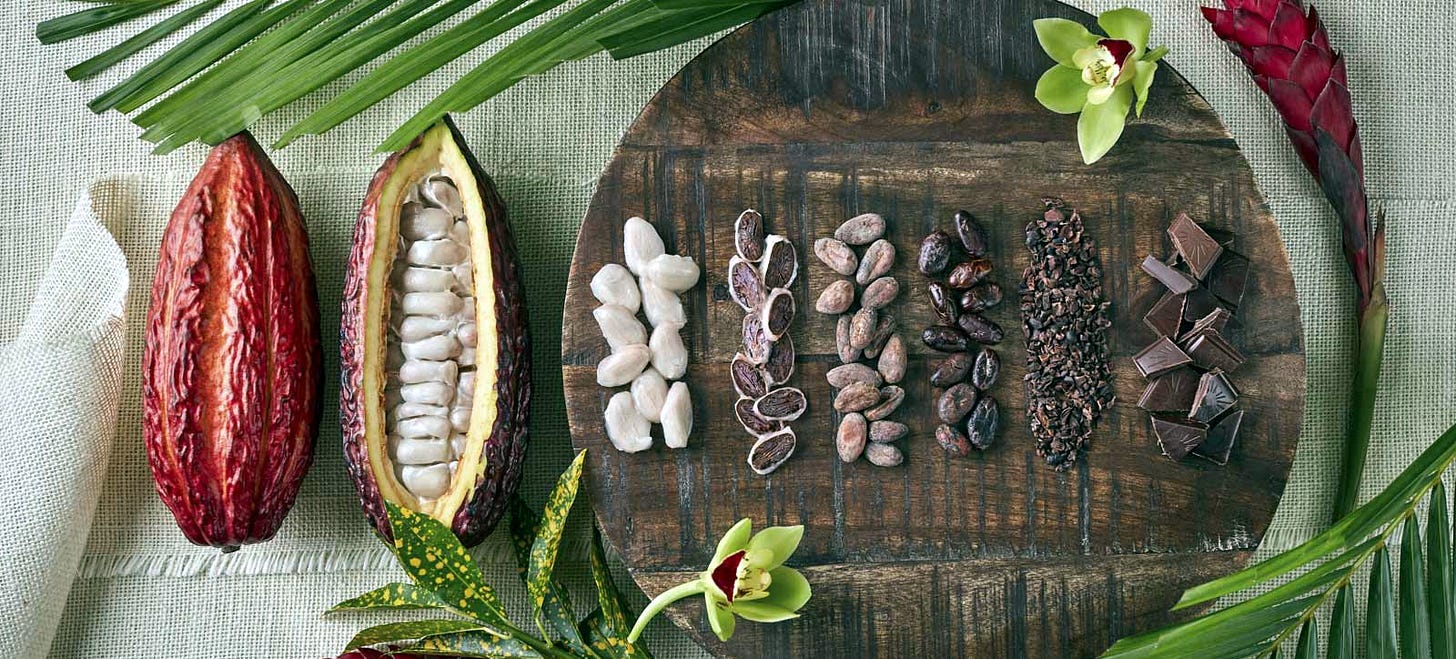Bittersweet Truth: Unwrapping the Social and Environmental Cost of Chocolate
What You Should Know About the Hidden Impacts of the World’s Favorite Sweet Treat
As Easter approaches, chocolate sales rise sharply. Chocolates shaped like bunnies or eggs are often consumed around this time of year, and are a cornerstone of the holiday for many. Indeed, this is one of the year’s peak seasons for chocolate consumption in many parts of the world1. However, most people remain unaware of the broader implications of chocolate’s production.
Behind the familiar product is a supply chain that raises serious social and environmental concerns. These include labor exploitation, especially involving children, and significant deforestation in cocoa-producing regions. This week’s newsletter looks at how chocolate is made, challenges with traceability and transparency within the supply chain, and what steps can be taken to support more ethical and sustainable production.
How Chocolate is Produced
Chocolate is made from cocoa beans, which are the seeds of the Theobroma cacao tree. This tree is native to Central and South America but is now cultivated in tropical regions worldwide, particularly in West Africa, Latin America, and Southeast Asia2.
Cocoa beans develop in pods, which take five to six months to ripen. The pods are then harvested by hand and split open to extract the beans. After this process, the cocoa beans are fermented and dried. From there, they are sold, exported, and further refined into cocoa mass (also known as cacao liquor), butter, and powder. These ingredients are used by manufacturers to make the chocolate products that are sold to consumers.
The Cocoa Supply Chain
Cocoa’s journey from farm to chocolate involves multiple stops and a complex journey. It typically begins with smallholder farmers who grow and harvest the beans. The beans are then often sold to local buyers or cooperatives, who then pass them on to exporters. After export, the beans are processed and used by manufacturers to produce chocolate for retail.
This supply chain is long and often lacks transparency. Many companies cannot fully trace the origins of the cocoa they use. According to the annual Chocolate Scorecard, improved traceability is key to identifying problems and implementing responsible practices across the industry3.
Labor Issues in Cocoa Production
The demand for inexpensive cocoa contributes to poor labor conditions in producing countries. West Africa produces about 75 percent of the world’s cocoa4, with Côte d’Ivoire and Ghana alone accounting for nearly 60 percent of the global supply5. Despite this central role in the supply chain, many cocoa farmers live in poverty.
Research by the U.S. Department of Labor found that 1.56 million children are involved in child labor on cocoa farms in Côte d’Ivoire and Ghana. These children may perform tasks that are physically demanding and sometimes hazardous, including carrying heavy loads, using machetes, and applying pesticides.
Child labor is used in part because it reduces costs. This practice has devastating results on children, as it also prevents them from attending school and limits long-term opportunities for communities. Meanwhile, many adult workers receive wages that fall below subsistence levels. According to recent data, in 84 percent of cases, farmers either do not earn enough to meet basic needs or their income is unknown6.
Pesticide use is also common in the cocoa industry, adding to these concerns. Exposure can have negative health effects, with children and pregnant women at particularly high risk, especially when protective measures are not in place.
Environmental Effects of Cocoa Farming
Cocoa production is also a driver of deforestation in growing regions where forests are often cleared to plant new cocoa. In Côte d’Ivoire, an estimated 70 percent of illegal deforestation is linked to cocoa farming7. Ghana and Côte d’Ivoire have each lost over 80 percent of their forests over the past 60 years, with one-third of that deforestation attributed to cocoa8.
This forest loss reduces biodiversity and contributes to the decline of wildlife species, including primates. Great apes, including gorillas and chimpanzees, are particularly vulnerable to habitat and population loss driven by cocoa farming9. Deforestation also degrades ecosystems, disrupts water cycles, and contributes to carbon emissions.
In addition to land use change, the use of agrochemicals like pesticides and fertilizers affects both the environment and human health. These chemicals can lead to contamination of soil and water and contribute to the decline of pollinators.
Moving Toward Sustainability
Despite these challenges, you don’t need to swear off chocolate entirely quite yet. Luckily, awareness of the issues surrounding cocoa production is increasing, and there are global efforts underway to create a more socially and environmentally sustainable cocoa industry. Improving farmer income is central to this work; when farmers receive a fair price for their crops, they are less likely to depend on child labor and more able to invest in responsible farming methods.
Supporting access to education and addressing gender inequality can also help reduce the use of child labor. Programs that focus on community development and worker protections are showing early signs of progress.
Environmentally, one proposed solution is agroforestry—the practice of growing cocoa alongside trees and other crops. This method can reduce the need for deforestation, improve soil health, and support biodiversity.
However, sustainable production requires commitment from companies throughout the supply chain. One of the most important steps is increasing traceability. Knowing where cocoa comes from allows companies and watchdog organizations to monitor labor practices and environmental impacts more effectively.
Choosing Sustainably Sourced Chocolate
The Chocolate Scorecard is an annual report that evaluates companies on their cocoa sourcing practices. It assesses their performance across several categories, including traceability, living income, child labor prevention, and environmental sustainability. The Scorecard provides detailed information on how companies are performing and allows consumers to make informed choices.
Tony’s Chocolonely received the highest scores in the most recent edition. The company is known for its active efforts to eliminate child labor and support transparency in its supply chain.
In contrast, Mondelez International—one of the world’s largest chocolate manufacturers—received the lowest score in the Chocolate Scorecard’s 6th edition. The company declined to participate in the Scorecard process, which limits public insight into its sourcing practices. In the context of sustainability and human rights, lack of participation is often viewed as a failure of accountability.
Transparency is becoming an important indicator of whether a company is serious about reform. Participation in public assessments like the Scorecard can signal an organizational willingness to improve transparency and further a sustainable supply chain.
Consumer behavior plays a role in driving industry change. Choosing chocolate products from companies that support ethical sourcing can help improve conditions for farmers and reduce environmental harm.
Certifications such as Fairtrade, Rainforest Alliance, and others can offer some assurance that basic standards are being met. While these labels are not perfect, they indicate that a company is engaging with sustainability issues. Supporting companies with strong practices can influence others to follow suit. Avoiding products with unclear sourcing can also send a message to the industry that transparency and ethical conduct matter to consumers.
Ensuring A More Responsible Future for Chocolate
Chocolate is part of many traditions and celebrations, particularly during holidays like Easter. But its global supply chain includes practices that undermine human rights and harm the environment. These issues are complex, but not unchangeable.
Improving income for farmers, reducing human rights issues, and protecting forests are all possible with the right policies, business practices, and consumer pressure. Companies that lead with transparency and accountability are showing what’s possible.
As awareness grows, so does the opportunity for meaningful change. By making informed choices and supporting sustainable practices, consumers can help shape a chocolate industry that is more ethical, more equitable, and better for the environment.
This Week in Sustainability is a weekly email from Brightest (and friends) about sustainability and climate strategy. If you’ve enjoyed this piece, please consider forwarding it to a friend or teammate. If you’re reading it for the first time, we hope you enjoyed it enough to consider subscribing. If we can be helpful to you or your organization’s sustainability journey, please be in touch.






